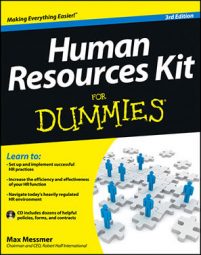Even when you have good cause, firing an employee is not an easy process. The following guidelines can help you avoid some common mistakes in connection with employee terminations:
Is there a rule, policy, practice, or performance standard? Be sure to identify a rule, policy, practice, or performance standard that an employee violated that warrants his discharge. Sometimes what seems to be an obvious standard just doesn’t exist.
For example, although an employee may have “stolen” parts from a distribution center, there may be no express policy regarding the parts that the employee “stole” if, for example, he took them out of the dumpster in the parking lot.
Did the employee know the rule, policy, practice, or performance standard? An employer may have a policy on a particular subject, but the company never disseminated it or it was never disseminated to the particular employee.
It is not true that only policies or standards that are distributed to employees in writing will support an employee discharge, but you should explore the possibility that the employee legitimately did not know of (or understand) the policy or standard at issue. At the same time, some behavior is so outrageous that an employee can’t legitimately claim that she didn’t know she was doing something wrong.
Did the employee break the rule, policy, or practice or fail to meet a performance standard? Be sure to carefully analyze the situation objectively. Also consider a related issue: Is there a plausible excuse? For example, an employee late to work five times in one month may explain that on two of these days, he stopped to talk to a supervisor in the parking lot.
Is termination appropriate? In deciding to fire an employee, you need to consider whether other employees who have engaged in similar behavior were terminated. Often, there are nuances that seem to justify a termination in this instance, even if termination has never (or seldom) occurred previously. Think critically about whether the nuances may be difficult to rely on if the person sues.
On the flip side, there also can be instances in which an employee has committed a terminable offense for which others have been terminated, but for which termination in this specific case may be too harsh or appear too callous (for example, the employee was distracted by a close family member’s illness).
This isn’t to say that termination may not still be appropriate — you just need to think about how the termination “plays” to an outsider and how you can show that the punishment was justified, despite the excuse.

